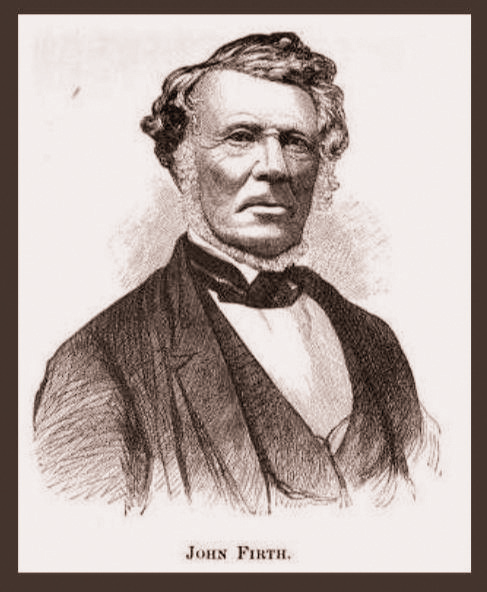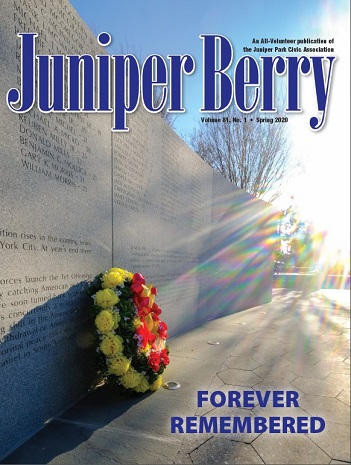In 2011, the Juniper Berry reprinted Barbara Stankowski’s 1976 interview of local resident Mary Micari. Mary had provided vivid details of the Maspeth she remembered growing up. She recalled … “the old Firth House, on the corner of Grand Avenue and old Firth Avenue, where the Maspeth Bingo is now. The big white house, with its white picket fence was the home of John Firth and his extensive land also contained the Firth Fife Factory about 1852.”
It was hard for me to imagine a big house being sited there before the bingo hall. But last year, I discovered a photo of the Firth house which inspired me to delve into who the Firths were. Generations of the family contributed greatly to music in America in during our country’s first century. London flutist and music engraver Edward R. Riley (1769–1829), immigrated to New York in 1805. He became the patriarch of several generations of flutists, flute manufacturers, and music publishers. Riley was actually New York’s first music publisher, with his store located at 29 Chatham Street (Park Row today) near City Hall in Manhattan. Riley’s daughter Sarah married John Firth. Another of his daughters married William Hall. John Firth was born in 1789, emigrating from Yorkshire, England, in 1810. He and William Hall both served in the United States military during the War of 1812 and later were coworkers in Riley’s shop.
Firth struck out on his own in 1815 and Hall separated from Riley in 1820. In 1821 the brothers-in-law joined to form Firth & Hall. They opened their music store at 358 Pearl Street, but moved in 1832 to 1 Franklin Square. The latter building was George Washington’s residence when he served as our first president.
After becoming prominent music publishers, Firth and Hall teamed up with Sylvanus Pond to form Firth, Hall & Pond. This evolution of the company experienced much success in music publishing, retailing, and manufacture of musical instruments throughout the 1840s.
It is documented that in 1834, Firth, Hall & Pond entered into an arrangement with a Connecticut woodwindmaking firm and sold their instruments in the New York store before acquiring the company in 1845. In 1847 William Hall left the partnership to form his own company with his son.
This prompted Firth & Pond to bring their sons (Thaddeus and Edward J. Firth and William Pond) into the business, which became renowned as exclusive publisher of Stephen Foster’s music. The company soon evolved again, this time to include the manufacture and sale of pianofortes as well as flutes.
Throughout the 1850s, there was high demand for guitars. Firth, Pond & Company struck a deal with C.F. Martin and James Ashborn to sell guitars in FPC’s store and under FPC’s brand name. With lined cases, the instruments were sold for $15 to $50. By 1855, Firth, Pond & Company was making more from the sale of instruments than from sheet music.
Firth and Pond decided to part ways, and their business split into Firth, Son & Company and William Pond & Company. John Firth died in 1864 and William continued to run the company until 1867 when he sold it to Oliver Ditson & Co. Thaddeus continued to publish sheet music on his own. William Pond & Company closed in 1917. The instruments manufactured and sold by Firth et al are highly sought after for their historic value.
Now, let’s get back to the Maspeth mansion. The home on Firth Avenue (69th Place) off Grand Avenue (Street at the time) was built circa 1800. We are not sure who the previous owners were or when the Firths moved in but there was a family presence dating back at least as far as the mid-1800s and into the second decade of the 20th Century.
Mary Micari believed that the fife factory on the property, shown on old maps as being close to 69th Street and Grand Ave, dated back to “about 1852.” This would put its opening during the “Firth & Pond” era, at a time when they were expanding their sale of instruments.
One thing is for certain, however. Thaddeus, one of the later partners in Firth and Pond, and the last to carry on the Firth musical dynasty, died in the house in 1913 as per an obituary printed in The Music Trade Review. The land along Firth Avenue was subsequently sold to a developer who built handsome rowhouses south of Grand Ave. The corner, where the Firths’ house was located, in a few years would host the Maspeth Movie Theater, built in 1924. The southern end of the property was condemned in the 1950s for the construction of the LIE. The only trace of the Firths left in Maspeth today is the family burial plot at Mount Olivet Cemetery.
(Much of the info for this article came from the academic paper “An Early American Family of Flutists” by Wendell Dobbs.)




